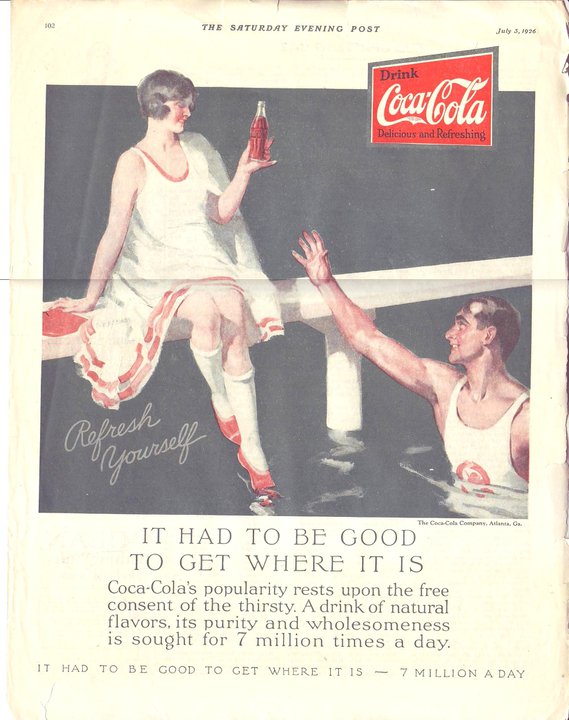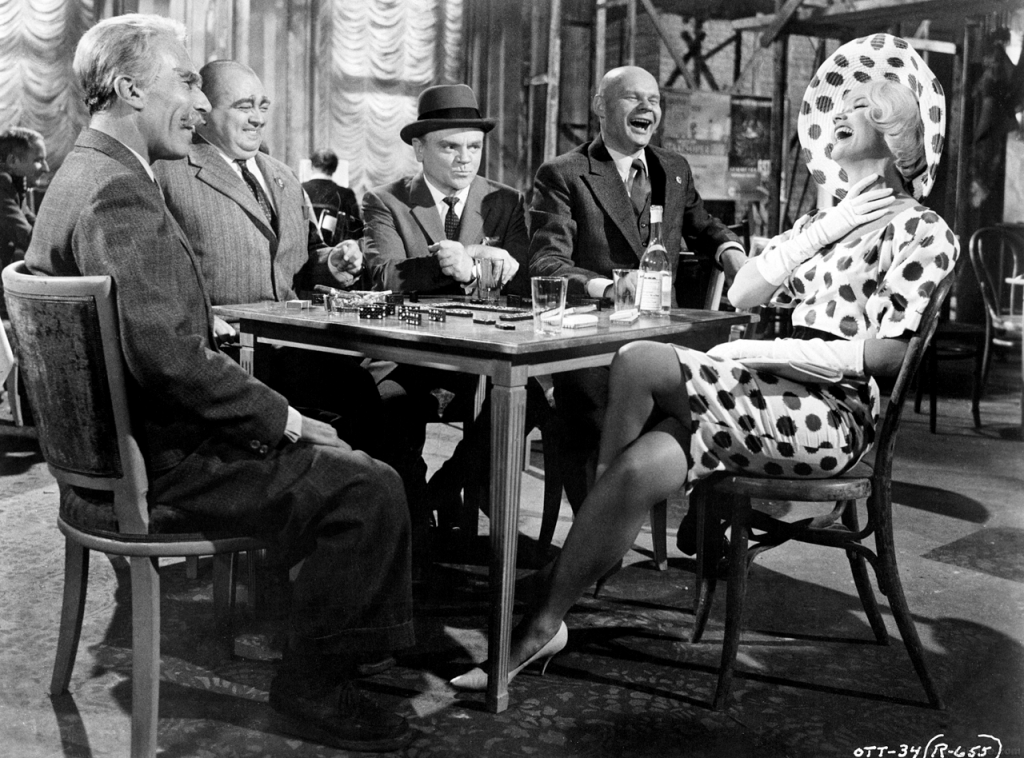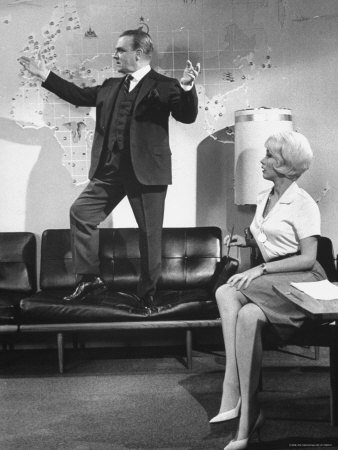Pure nothingness.The embracing of empty contradictions. The fraternization of impossibilities. The essence of nothingness.Kitsch. It comes from a German word, or even perhaps Yiddish, to denote bad taste. In inexhaustible supply of cheap images to pacify the longings of the emerging middle-classes and urban poor now cut-off or ambiguously “emancipated” from the older traditions. Kitsch is found at the junction of profound emotional intensification, with kitsch serving in a sense as a release valve. However, the escape, the flight into a world of the diminishment of all things spiritually valuable or at least holding a struggle for significance, has a price and that usually involves a numbing of emotion, loss of empathy and some from of addiction, or at least the ensuing disappointment from the phony eureka moment of consciousness and the continual search, sold as gratified by consumerism, to find that elusive enema to purge one of the crap in a giant down payment of nihilism.

---Fame lasts only fifteen minutes, and Kings and Queens eat hotdogs and drink Coca Cola everyman’s food but they’re both tasty. Warhol cheapened art as much as he cheapened life, but he had a marketing point, because cheapness sold. He used cheap, fast food the social rubbish of celebrity photographs, full of capitalist calories and few human nutrients, a sort of candified and dandified image of marketed personalities to make a sort of fast food art. In capitalist society the difference between inner and outer riches has collapsed, like the difference between art and rubbish. As Warhol said, "I always like to work with leftovers, doing the leftover things. Things that were discarded, that everybody knew were no good. I always thought it had the potential to be funny." Warhol seemed to think that art was a game that used the leftovers of capitalism to have fun. --- Read More:http://www.artnet.de/magazine/the-triumph-of-shit/ image:http://blueveins4.tumblr.com/post/7665832680/deco-ad-for-coca-cola
…As Sigmund Freud had pointed out, intellectual history had mostly hitherto been divided between an Enlightenment scorn for the dream as mere mental detritus, and inversely, its unqualified celebration in the eyes of the Romantics. While far from being liquidated, such approaches would at least now have to contend with a certain cross-contamination of categories between ‘dream’ and ‘waking reality’. In Benjamin’s essay of 1925 entitled ‘Dream-Kitsch’, his first published treatment of Surrealism (then at the height of its first flourishing), he stresses that this inter-penetration of the two realms is not a ‘natural’ constant, but a historically specific phenomenon. Kitsch objects, the banal by-products of culture subsumed under the logic of industrial production, are assimilated into dreams, thereby obscuring the oneiric ‘blue horizon’ of the Romantics, with a ‘grey coating of dust’. Correspondingly, as Marx first diagnosed with his analysis of the commodity fetish, at the height of capitalist modernity, ‘ordinary’ commodities become invested with a magical, quasi-religious and dreamlike aura….

---Read More:The other movement most commonly identified with notions of kitsch is Pop, in particular the brand of Pop popularized by artists such as Warhol and Roy Lichtenstein. Baudrillard argues that the logic of Pop art relies on its presentation of reality as it exists. Following statements made by Warhol, he argues reality needs no conciliation and that the object becomes art once isolated from the things that surround it (45-‐78). Read More:http://www.modernhorizonsjournal.ca/June%202011/Winograd.pdf image:http://www.versacreations.net/advertising/82/7-famous-slogans-of-20th-century/
…As such, Aragon’s Le Paysan de Paris offers a remarkably prescient evocation of the arcades as a world where the everyday is saturated with the marvellous, a lyrically intense dream-world in which arises the basis for a ‘mythology of the modern’. Hence, the arcades appear as:
…places where men go calmly about their mysterious lives and in which a profound religion is gradually taking shape. These sites are not yet inhabited by a divinity. It is forming there, a new godhead precipitating in these re-creations of Ephesus… Read More:http://www.surrealismcentre.ac.uk/papersofsurrealism/journal1/acrobat_files/Calderbank.pdf
When more is less. Promoted as the ultimate “true” product. Obviously, one which cannot deliver what it promises. Coke is the teaser of the larger promise of the American dream, The utopia of life, liberty and freedom.The production of coke, like images and dreams is a banal and repetitious as Federal Reserve printing presses cranking out cash. In Billy Wilder’s One, Two, Three, we have a cold-war narrative where ideology is seen through the prism of the glass bottle of Coke, a liquid entity with no intrinsic value, like money, its a medium of exchange of images and ideals. Wilder excavates the appalling and grotesque- entire societies built on the economics as intangible as the Coke promise- and then attempts to resolve it through a sugary ending. But we know what existed down there, in the camps…..

---Along the way, MacNamara must rescue Piffl from East Germany, where MacNamara got him arrested, by trading his own attractive secretary for the wayward communist. This sequence, more successfully than some of Godard’s stabs at the same idea, brilliantly illustrates the commodification of women by simultaneously undermining any sense of law or ideological belief that might conceal these circumstances. The language MacNamara and his East German associates use to barter over her recalls an earlier business deal they were discussing (the expansion of Coca-Cola into East Germany); women can be just another moving part in an elaborate system of traded goods and services, underpinned by the fluidly interchangeable nature of money. MacNamara’s secretary dances on the table for these men, “sweetening” the deal for them, as though she were a toy wound up and displayed by a door-to-door salesman.--- Read More:http://www.journeybyframe.com/2011/06/28/one-two-three-billy-wilder-1961/ image:http://jamesrocchi.com/tag/billy-wilder/
Perversely, Coke is a situational as found in the I-and-Thou of Martin Buber; what Buber posited as a personal dialogue that defined the nature of reality, Coke embedded itself as the I-it, the disruptive force, a world focused on things, objects with isolated qualities. Fragmentation and a relationship of separation and detachment. Coke has always tried to endow the object with “being” as if love was integral to a thou-it relationship:
Instead, it creates a field, a plane (flat, in every way, like the dollar bill), where value is suffocated, as though conspiratorially, and dispensed with in the black of night. The cartoon, the comic strip, or the circus (which is recalled here through the use of the Aram Khachaturian’s “Sabre Dance”) provide the appropriate metaphors: this is a space where up can be down, black can be white, and everything opens itself to the vulgarity of mockery. The film’s wide frame, like the dollar, seems to hold everything and nothing at once and to announce that no meaning can exist outside, for there is no meaning other than what can be grafted onto the dollar.
MacNamara seems to like it this way, as any capitalist must feel. As MacNamara, Cagney becomes machinic, rapid, spitfire; he almost never stops talking or moving but never betrays his exhaustion (which is apparent in all the other characters). His seamlessness, the way he jumps from one idea to another, even its opposite, recalls the fluidity and indestructability of money. Whatever problem arises, MacNamara trusts that it can be papered over with money (which is always equivalent to power). There is a grace, too, in how he does this, how he dances this economic ballet.Read More:http://www.journeybyframe.com/2011/06/28/one-two-three-billy-wilder-1961/
Kuspit:It’s the old alchemical idea of turning the shit of life into artistic gold. The idea was given modern form by Breton. Writing about Duchamp, he argued that when an artist confers the status of art on some found object why not shit? it acquires a certain dignity and purpose, and with that a deep meaning. For modern alchemist art dresses up the dregs of life so that they become theoretically classy: they’re no longer bare fact but existential truth. Read More:http://www.artnet.de/magazine/the-triumph-of-shit/
Slavoj Zizek:that Coke functions as the direct embodiment of “IT,” of the pure surplus of enjoyment over standard satisfactions, of the mysterious and elusive X we are all after in our compulsive consumption of merchandise….

---This film understands capitalism and its appeal but it doesn’t necessarily celebrate it: the whirlwind of mutability brought about by money leaves us with no stable ground on which to place our feet and a dull emptiness that we are told can be filled by another Coca-Cola.--- Read More:http://www.journeybyframe.com/2011/06/28/one-two-three-billy-wilder-1961/ image:http://alsolikelife.com/shooting/2009/11/one-two-three-1961-billy-wilder/
…The unexpected result of this feature is not that, since Coke does not satisfy any concrete need, we drink it only as a supplement, after some other drink has satisfied our substantial need — it is rather this very superfluous character that makes our thirst for Coke all the more insatiable: as Jacques-Alain Miller put it succinctly, Coke has the paradoxical property that, the more you drink it, the more you get thirsty, the greater the need to drink more of it — with its strange bittersweet taste, our thirst is never effectively quenched. So, when, some years ago, the publicity motto for Coke was “Coke, that’s IT!” we should discern in it the entire ambiguity: “that’s it” precisely insofar as that’s NEVER effectively IT, precisely insofar as every satisfaction opens up a gap of “I want MORE!” Read More:http://www.egs.edu/faculty/slavoj-zizek/articles/surplus-enjoyment-between-the-sublime-and-the-trash/
ADDENDUM:

Herbert Leupin. 1962. Read More:http://www.art.com/products/p12193385-sa-i2044526/herbert-leupin-coca-cola-swiss-pop-art-c1962.htm
Picasso also collected a great deal of rubbish of all kinds apparently he never threw out anything suggesting that he invented the collage to store and frame some of his rubbish. He seemed to have been superstitious about shit, and ate his own kept it for himself, as it were as the Picasso epigraph suggests. Indeed, “Picasso, according to Marie-Thérese Walter, enjoyed experimenting in all things sexual, including the coprophagous,” suggesting that his collages were a way of experimenting with this own shit, in whatever substitute form a way of making the tasteless “tasteful.” One wonders if he was emulating one of De Sade’s priests. But the priest got a girl to shit in his mouth, whereas Picasso shat in his own mouth, unless he got Marie-Therese to shit his mouth just for the experimental fun of it. Read More:http://www.artnet.de/magazine/the-triumph-of-shit/





 COMMENTS
COMMENTS